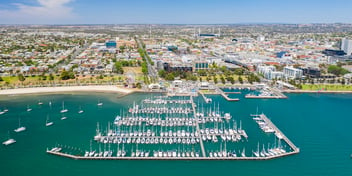Personalised data key to influencing customers’ water consumption
In the age of digitalisation, customers are expecting more from their water service providers, and one recent study shows the importance of personalised data to help drive behavioural change around water consumption.
Presenting at Ozwater’21 on how to drive customer advocacy, engagement and behavioural change, Sydney Water’s Dr Christoph Prackwieser and Monica Heinrich discussed their research into the utility’s ability to influence water usage among its customer segments.
The study included a structured customer experience (CX) research process involving 175 staff participants, each provided with a digital meter and mobile app, that aimed to provide key insights to help Sydney Water assess requirements for the digital customer roadmap.
Prackwieser, Sydney Water’s Internet of Things Manager, said the utility is constantly looking for ways to make Sydney a smarter and more liveable city.
“When we talk about the liveability of a city, one of the key focuses is ensuring less distractions and less disruptions. If we can reduce water pressure issues, sewer smells and water outages, we can make Sydney — and every city — more liveable,” he said.
“On the other side of things, enabling our customers to make informed, educated decisions about water on their property can enable less disruptions, too. It could be a leak, or a washing machine that uses much more water than the neighbour’s, or deciding if it makes financial sense to install a water tank.”
Prackwieser said Sydney Water’s CX research study aims to provide the information customers need to make better decisions around water consumption.
“To provide our customers with services and insights, we need to get data from their environment. It’s not enough anymore to monitor our big assets. We need to move our digital eyes and our ears into the spaces where our customers live,” he said.
Sydney Water Customer Experience Lead Monica Heinrich said developments in technology are allowing utilities to transform the way they communicate with, and influence, their customers.
“When we are talking about communicating with customers, the existing paradigm involves sending a quarterly bill via post. The new paradigm involves showing customers how they use water on a daily and weekly basis so that they can then change their behaviour,” she said.
“This research aimed to inform our next steps, to inform our investment decisions, to inform what we build, and to share those findings with industry and our leadership team.”
One of the key learnings from the study was around awareness perception, Heinrich said.
“While we are increasing awareness in terms of how much water each household is using, unless we can put that number in context, it doesn't really have the power to change the customer’s behaviour,” she said.
“The second learning is around novelty. In the digital space, we can no longer build something and leave it as it is. Customers are now expecting the newest and best next thing.
“The information and the ability to trigger notification, around leaks for example, is not enough. It has to sit within an ecosystem to support action. It’s about more than notifying the customer of a problem; it’s about closing the loop and guiding them on how to fix the problem.”
Heinrich said benchmarking is also an important consideration, with the expected use of 200 litres per day often having a perverse effect on customers’ habits.
Those that used less than the benchmarked amount thought it was an indication that they could use more water. But every family is different,” she said.
“Some homes have pools, some homes have big yards, some families have pets, some people have disabled parents or little kids and therefore require more water for washing. Setting a benchmark that indicates what efficient water-use looks like for everybody doesn't really work.
“We found personalisation to be very important. A generic experience is not enough. We need to understand the household makeup, including ages and demographics, and the types of water use occurring in homes.
“The more personalised the advice we can give our customers, the more they can change their water-use behaviours.”
With customers engaging on a daily basis with a lot of high-tech companies, water utilities must aim to deliver digital products that meet best-practice, Heinrich said.
“Our customers’ expectation of digital products is not set by us,” she said.
“I’m not saying we should try to be Google, but we should ask how we can utilise big tech best-practice to ensure that our products are good enough.”

